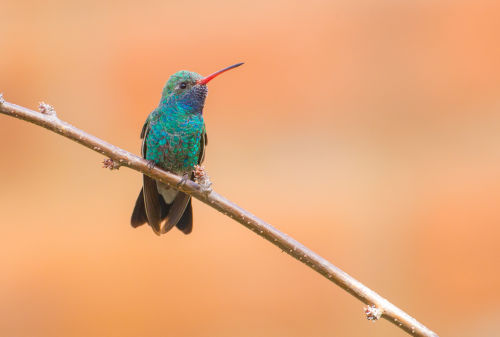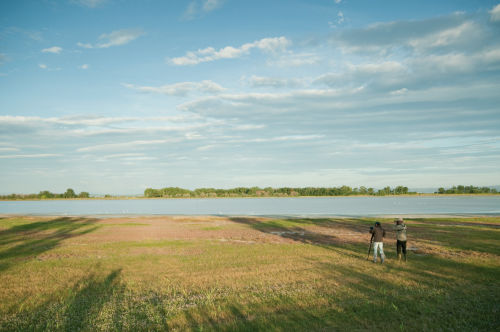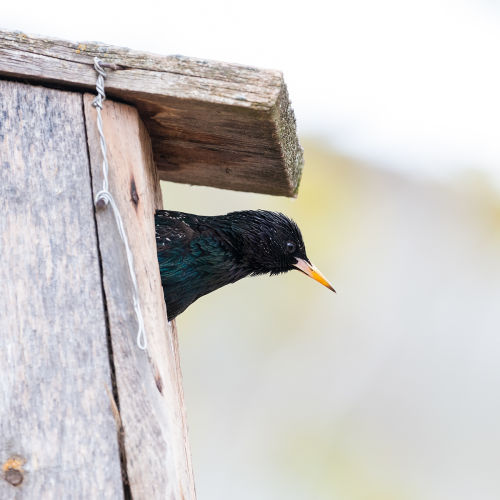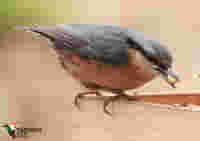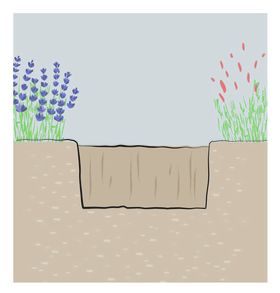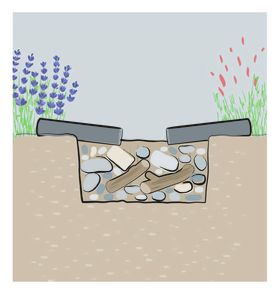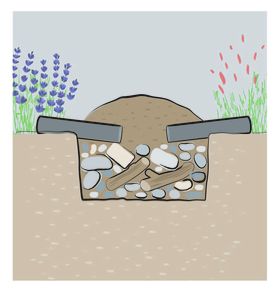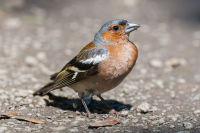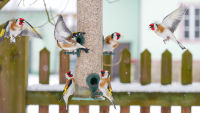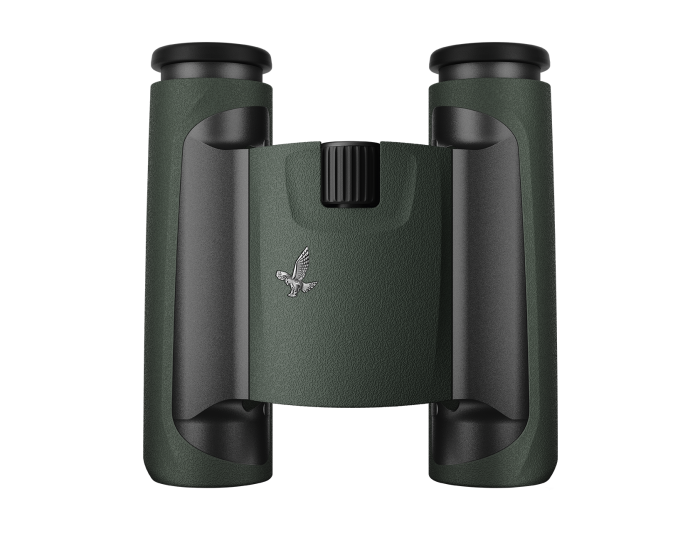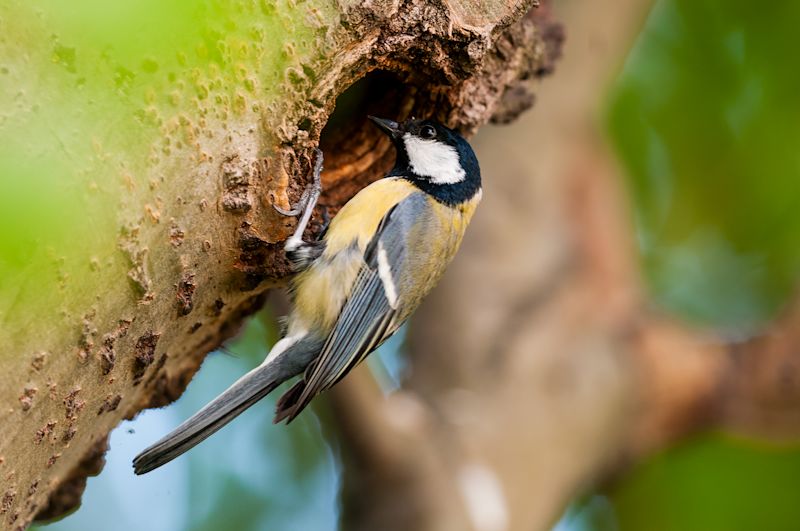Whilst autumn and winter months are not considered the prime time for gardening, it’s what I call the preparation time. It’s the time of the year when the world loses its colour, but it’s the time of year when wildlife provides the most magical experiences with bouncing thrushes among the fallen seeds and apples and skies filled with the flurry of passerines and the eerier nocturnal calls of waders. With all being said, there are several ways that we can make our gardens more appealing to wildlife – so here are my top five ways to attract wildlife to your garden for autumn and winter:

Providing roosting and hibernation homes
Hedgehog house
Houses of various designs offer a safe space for hedgehogs to hibernate and rest during the day. Some designs have an entrance straight into the nesting chamber, while others have an entrance chamber separate from the nesting chamber, offering more protection from predators.
© Wildlife World

Providing roosting and hibernation homes
Mouse box
This box has a wire frame with woven stems around the outside, and a waterproof layer inside at the top. With the entrance hole next to the trunk of a tree, it attracts mice and voles, which can scuttle in safely from the trunk (or it may be used by birds such as wrens and treecreepers). You can add soft material inside such as straw and sawdust to encourage small mammals to hibernate over the winter and sleep during the day – occasionally you’ll see more than one creature inside the box. The box is attached to a tree at 1.5 – 2 meters (5 - 6½ feet) high.
© Wildlife World
You can add homes in your garden if you think that it is suitable enough for wildlife already, otherwise consider adding a hibernaculum to your garden. These are ideal for creatures such as lizards, snakes, and small mammals that will use this creation as a hibernation spot. Whilst we can create large scale hibernaculums, we can also create small ones – my preference is 30cm-60cm in diameter.
Clear an area.
Then dig a hole about 50cm (20in) deep and around 1.5m (5ft) across, or smaller – working with the space you have available.
Fill the hole with logs, branches, bricks, rocks, allowing space in between these for reptiles and amphibians to pass through.
Insert tubes for access: add a drainpipe on either side of the hibernaculum at ground level to give ways into and out of it.
Add soil: Now cover the pile with soil loosely between the materials and mounded to about 40cm (16in) high. Don’t cover the entrance holes.
Sow or turf the top: You can turf the top for quick results, or saw it with wildflower seeds, which will provide food for pollinators in summer. Avoid compacting the soil.
2. Adapting your feeding for protein and fat
Your gardens during winter and autumn become one of the most frequented feeding locations for birds and many other wildlife. During this time, we should be looking to add more fat and protein into the diets of birds to ensure they have a good amount of store to get them through the cold days.

Adapting your feeding
for protein and fat
Classic and high-energy mixes: The classic mix contains sunflower seeds and chopped nuts with oats and cereal. The high-energy mix adds sunflower hearts and chopped peanuts with fewer “filler” elements.
Niger seeds: These tiny seeds are devoured by finches, because of their size they require a specialized feeder.
Peanuts: Best offered in a feeder so that birds break them up as they feed. Peanuts are particularly high in protein for extra energy.
Suet balls: Made of fat with seeds and sometimes insects embedded in them, these are high energy.
Your gardens during winter and autumn become one of the most frequented feeding locations for birds and many other wildlife.
Dan Rouse
Planting for
autumn and winter visitors
As autumn begins and the leaves begin to fall, it’s the time when food becomes more difficult to find but we can counter this by adapting the planting in our gardens to cater for wildlife. There are a variety of plants that flower into autumn and even some that provide all important food during the winter months such as Sunflowers, Linseed, Thistle, Ivy and Holly. Not only do these provide berries and seeds for birds, but other species also depend on these for food such as mammals for munching on berries, but insects will eat the leaves and flowers well into the autumn and winter months.
There are a variety of plants that flower into autumn and even some that provide all important food during the winter months such as Sunflowers, Linseed, Thistle, Ivy and Holly.
Dan Rouse4. Water Sources
Whilst we normally consider water sources for birds in the summer months, birds and other wildlife need water sources also during winter. Consider adding a tennis ball to your bird path to ensure during the frost that your water bath isn’t going to ice over completely.
5. Feeders Maintenance
We all have a range of different feeders in our gardens, whether you’re regularly feeding the birds or instead opting for a mammal feeding station to encourage your small friends to feed in your gardens. Feeder maintenance is paramount and it is something we all should be doing regularly. There are a few conditions that affect our wildlife such as:
Fringilla papillomavirus
Commonly known as “bumble foot”, this disease is common in finches. It can be seen as a number of growths or scales on the legs, resulting in the bird becoming lame or losing digits or the foot itself. This is another disease that is spread through contact on surfaces, so regular cleaning will help to prevent the disease from spreading.
Trichomonosis
This is the most common illness found in finches, doves, and pigeons – although it can affect any bird species. It does not affect humans or mammals. Trichomonosis causes lesions on the throat, making it harder for the bird to swallow its food over time.The disease is spread through the bird regurgitating its food, which contains the disease particles, onto surfaces such as bird tables where other birds can come into contact with.

About the author
Dan Rouse
Dan Rouse is a presenter, ornithologist and author from Swansea, Wales. She has written several books on garden wildlife with DK Books including How to attract Birds to your garden and How to attract Wildlife to your garden whilst also sharing her passion for wildlife through online content, magazine pieces and talks. Dan currently runs Tadorna Tours and Tadorna Wildlife which aims to bring people closer to wildlife through educational activities and wildlife holidays. @DanERouse www.danrouse.org.uk
